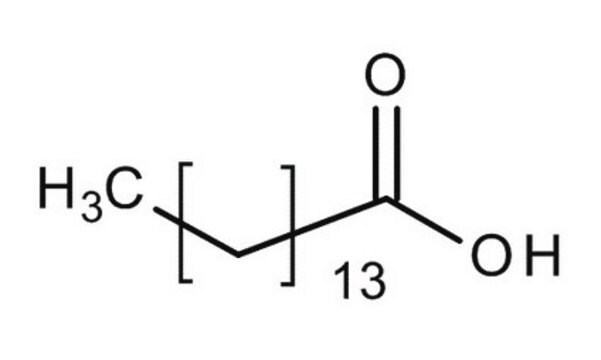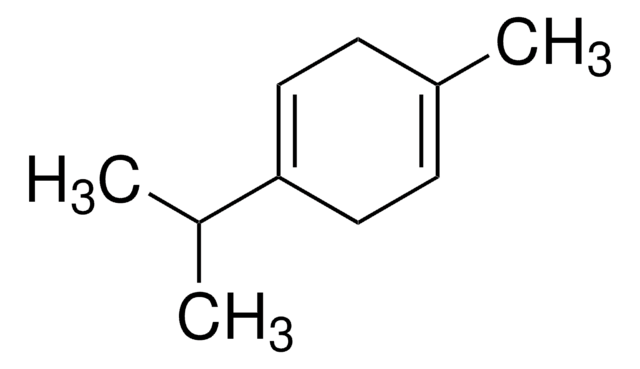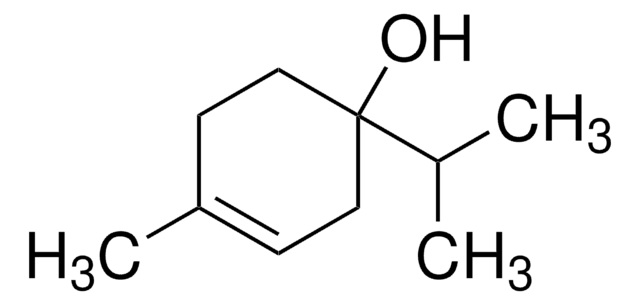Kluczowe dokumenty
91446
Pentadecanoic acid
analytical standard
Synonim(y):
C15:0, NSC 28486, Pentadecylic acid
About This Item
Polecane produkty
klasa czystości
analytical standard
Poziom jakości
Próba
≥99.0% (GC)
okres trwałości
limited shelf life, expiry date on the label
metody
HPLC: suitable
gas chromatography (GC): suitable
bp
257 °C/100 mmHg (lit.)
mp
51-53 °C (lit.)
51-55 °C
Format
neat
grupa funkcyjna
carboxylic acid
Warunki transportu
ambient
temp. przechowywania
room temp
ciąg SMILES
CCCCCCCCCCCCCCC(O)=O
InChI
1S/C15H30O2/c1-2-3-4-5-6-7-8-9-10-11-12-13-14-15(16)17/h2-14H2,1H3,(H,16,17)
Klucz InChI
WQEPLUUGTLDZJY-UHFFFAOYSA-N
Szukasz podobnych produktów? Odwiedź Przewodnik dotyczący porównywania produktów
Opis ogólny
Zastosowanie
Polecane produkty
Kod klasy składowania
11 - Combustible Solids
Klasa zagrożenia wodnego (WGK)
WGK 3
Temperatura zapłonu (°F)
235.4 °F - closed cup
Temperatura zapłonu (°C)
113 °C - closed cup
Środki ochrony indywidualnej
dust mask type N95 (US), Eyeshields, Gloves
Wybierz jedną z najnowszych wersji:
Masz już ten produkt?
Dokumenty związane z niedawno zakupionymi produktami zostały zamieszczone w Bibliotece dokumentów.
Klienci oglądali również te produkty
Nasz zespół naukowców ma doświadczenie we wszystkich obszarach badań, w tym w naukach przyrodniczych, materiałoznawstwie, syntezie chemicznej, chromatografii, analityce i wielu innych dziedzinach.
Skontaktuj się z zespołem ds. pomocy technicznej











